By Laura Harrison (iPhotography Student)
Since becoming an iPhotography member, I have been increasingly drawn towards abstract image-making. I find it offers a myriad of opportunities for the exploration of photographic art and certainly gets my creative juices flowing.

Currently I live in the Axarquia region of Andalucia, in southern Spain where we have a thriving international artistic community. It seems painters, sculptors, ceramicists, and photographers are drawn here by the quality of light and life.
A few years ago, I had a foray into ceramics, and this really opened my eyes to a world of texture, colour and form. I began to look at everyday objects in a different way and from then on my photographic journey began to gather pace.
Inspiration comes in many forms. The natural world is an endless source of ideas, but so too are “man-made” areas such as modern architecture. My nearest city of Málaga has some brilliant art galleries where I have seen some superb photography exhibitions.
The work of other photographers fascinates me, and I follow several on Instagram – surrealist Chema Madoz and architectural photographer Sebastian Weiss being firm favourites.
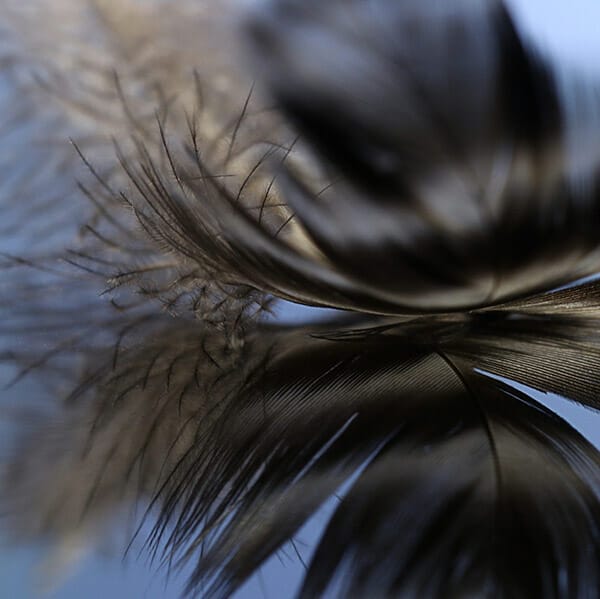
Modern technology plays a huge part in my workflow. All iPhotography members are blessed with instant access to a huge reference library of techniques, blogs, videos and also a truly amazing student gallery. In addition, I often use YouTube to pick up tips and watch on line tutorials.
Shooting in RAW format with a digital camera means editing software is an area to master – challenging but fun!
I wanted to produce some images on the theme of Reflections. I set up a basic “mini studio” in a small room of our house: on our computer workspace I built a small tower of CDs and placed a black ceramic tile on top to provide a shiny, reflective surface.
CDs are great because the height can be adjusted quickly and easily. For lighting I used an iPad with a Softbox App, which provides different coloured light backgrounds. Additionally, I have an LED desk lamp to brighten things up.
In these set-ups, a tripod is a must for me. I shoot with a Canon 80D and like to use live view to see the image on the rear screen of the camera. In shot also are a pot of water, eyedropper and spray bottle – together with a clothes pegs which comes in useful at time to hold things upright.
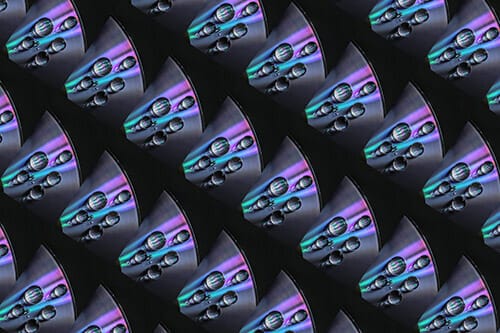
I found a poinsettia leaf which had fallen from a houseplant and applied a couple of drops of water once I had the leaf in position on the tile.
The lens is a Canon Macro EF 100mm 1:2.8L IS USM – shot at 100 mm. Camera settings were ISO 200, f8, 0”5 secs.
Editing was a simple exercise in Affinity for iPad. Using a Canon App, I can import images via WIFI to my iPad and quickly open them in Affinity. The major part of the edit was to use the In-painting Brush Tool to remove odd specks of water and dust from the surface of the tile and leaf – something which I recommend be done before shooting whenever possible!
Following this, I raided my box of treasures (found objects which I keep for future projects) and selected a feather for a different shot. I cleaned up the tile and set the feather in place. The image below gives a better idea of the Live View screen with the focus area which can be magnified to zoom in close to check focus clarity. Same lens as above, ISO 200, F18, 0”5 sec shutter speed.
Again, the image was imported into Affinity for iPad and edited. This time, I cropped the image, added a duplicate layer and used a High Pass adjustment of the blend mode to achieve the end result.
After all this, I definitely needed some fresh air and so went out in search of possible abstract images – and came up with these ideas, all taken around my car!
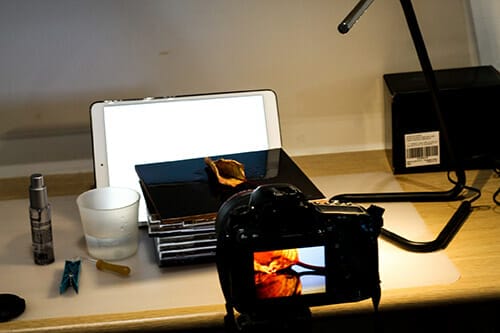

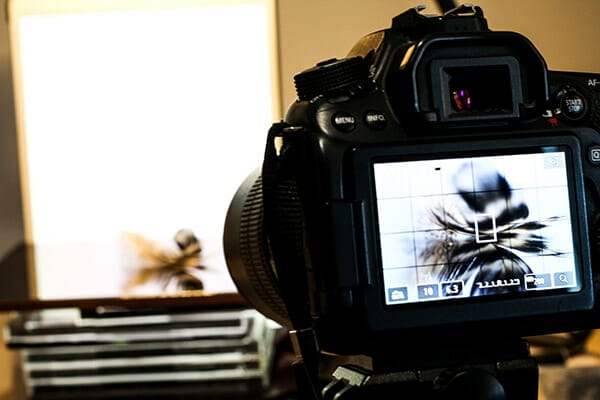
The first step is to create and select two images. Here, the first image, is a high-key feather image with a water droplet. The feather was placed onto my iPad, using the Softbox App to give a bright, white background and a small drop of water placed with an eyedropper.
With a macro lens at 100 mm focal length and settings of ISO 400, F/16 and a shutter speed of 1 second. The image is from a series I made entitled “underwater fireworks”. Researching food colouring in water photography, I discovered a “science experiments for children” video on YouTube and thought one of the ideas might have potential in a photographic sense.
Here is the technique: Pour a little vegetable oil into a small glass and add a few drops of different liquid food colourings. Stirring the mixture gently will produce many small coloured beads.
This mixture is then added to a large glass of water where it will initially float on the surface until gradually the beads “explode” and begin to sink down through the water – creating trails of colour as they descend. The same lens was used, ISO 800, F/2.8 and 1/125, together with an off-camera flash which helps to freeze the action of the trails.
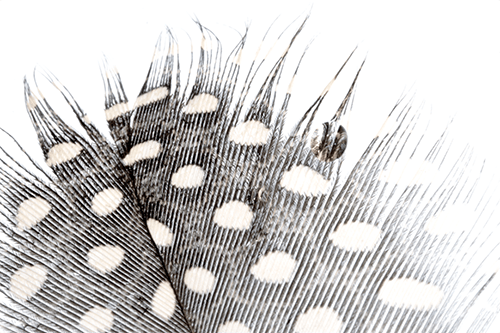
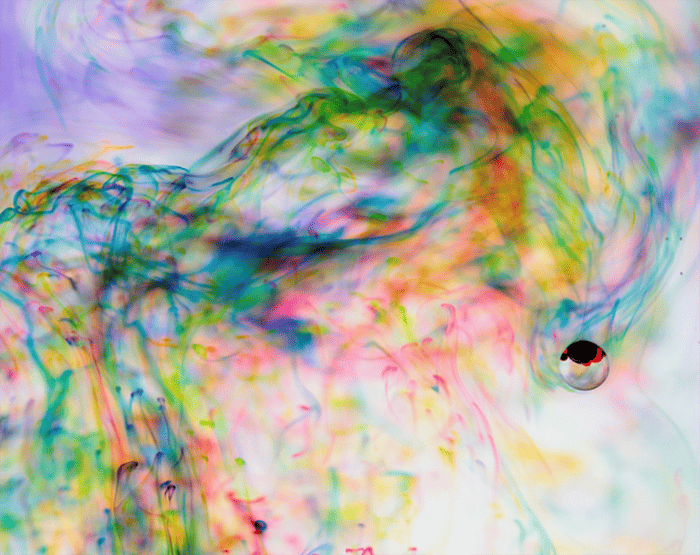
I signed up with iPhotography a few years ago with a view to improving my editing techniques and found the modules to be rather challenging but certainly educational. In addition to Photoshop, as mentioned earlier. I also use Affinity Photo to edit images – either on my MacBook or iPad.
I enjoy using Affinity for iPad, plus an Apple Pencil – particularly when travelling, to while away the journey. Some amazing abstract results can be obtained with a little bit of creative editing and I thought it might be interesting to share some of my recent ideas.
Combining two images, by overlaying one onto another, coupled with some patience, it is possible to create some original and different effects.
In order to arrive at the final composite abstract image, some further work was entailed! For some time, I have been intrigued by the possibilities of compositing two original images together. Although there are many stock images available on-line , I always prefer to use only my own work in order to produce an original and truly unique piece of photographic art.
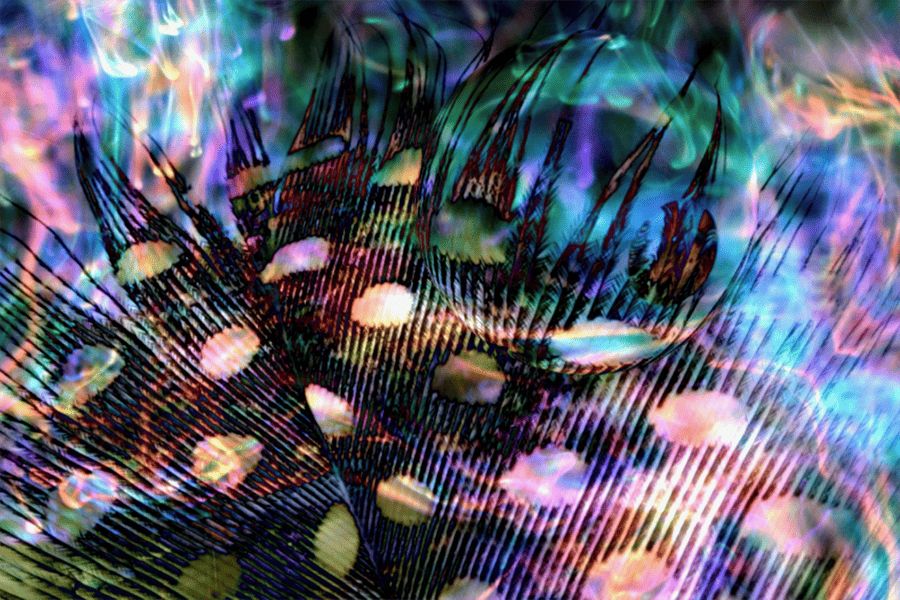
The first step was to import the feather image into Affinity Photo. Then the food colouring image was placed as a new layer and transformed by resizing to exactly the same dimensions as the feather layer. It was also flipped vertically. By playing around with the opacity and blend modes of both layers, a variety of possible effects began to emerge.
Once content with the outcome, I made a duplicate of the file, in case I had a later change of mind, and then I flattened the image into a single layer. An Affinity sphere filter produced the globe which gave an almost Christmas bauble effect; I used the Inpainting brush to remove some unwanted elements within the image.
This layer was then duplicated and some minor adjustments were made to the shadows/highlights and exposure levels before cropping to produce the final image.
A similar technique was used to transform two of my portrait shots into a more abstract image. The first image was taken with the same macro lens – which I find also works great for portraits at 100mm – settings were ISO 400, f5.6, 1/80. It was taken inside a derelict railway carriage where there was some interesting graffiti. Ancillary lighting was used.
The second image was taken inside Castle Howard and is of a mannequin with a Venetian mask. I shot using a Tamron 18-270 at 42 mm and the camera settings were ISO 500, F/8, 1/15th.
Here is the result once the two were “blended” together and transformed in order that the right eye of the girl and the left eye of the masked figure matched up.
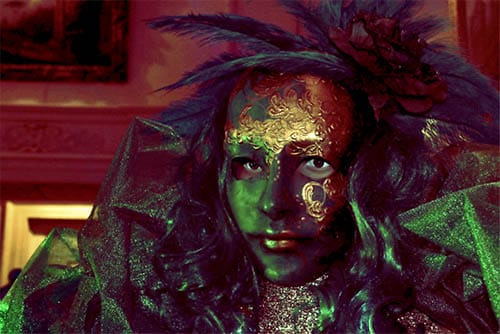
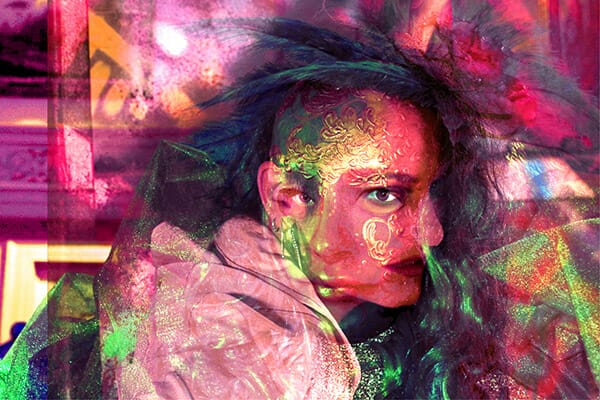
Abstract images can be obtained in a variety of ways and have the potential to be further transformed into something which will really get the viewer wondering what it is and how on earth you produced it.
Nothing irritates me more than when someone says photography is not really an art form because all you do is point a camera and press a button – how little do they know!
Shooting sunsets using amazing 5-in-1 magnetic lens filters from Kentfaith, the 1st choice for photo & video products.
Popular memory cards for photography – what’s the best SD card for your digital camera? Choose the right capacity and class speed in our guide
Discover the BEST way on how to clean a camera sensor using swaps, rocket blowers and pencil brushes to give your shots a dust-free finish!
Learn the basics of photography – fast – with our FREE 60-Second Photographer online course. Each class is short and sharp with simple, actionable steps that give you immediate results.
x 30 lessons

© iPhotography™
Become a confident and competent photographer in less than 30 minutes!
Before you leave, make sure you’ve secured your FREE online photography course (worth £29.99)
Each class is just 60-seconds or less making it the fastest and easiest way to learn photography!